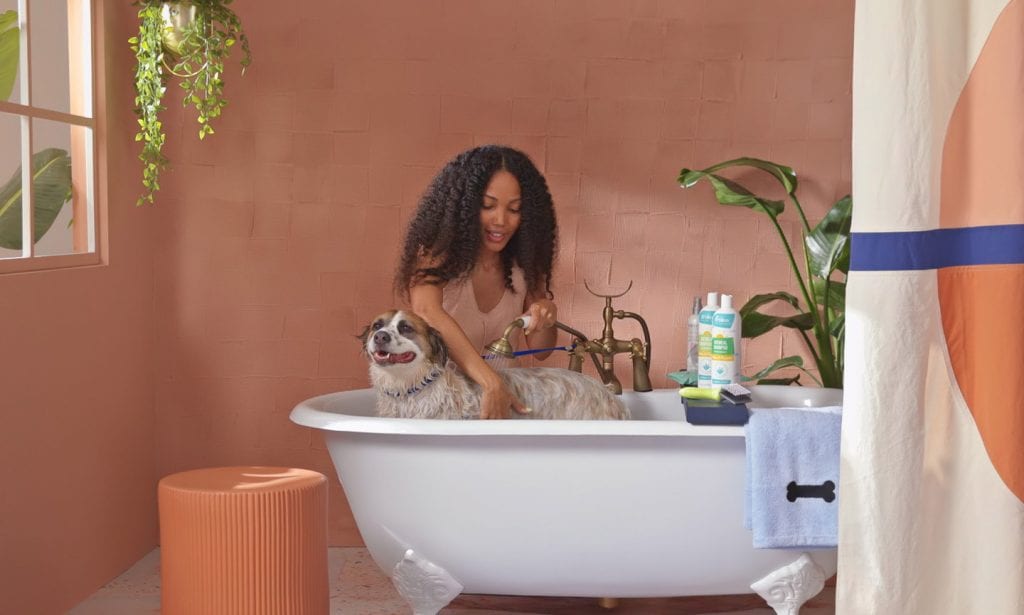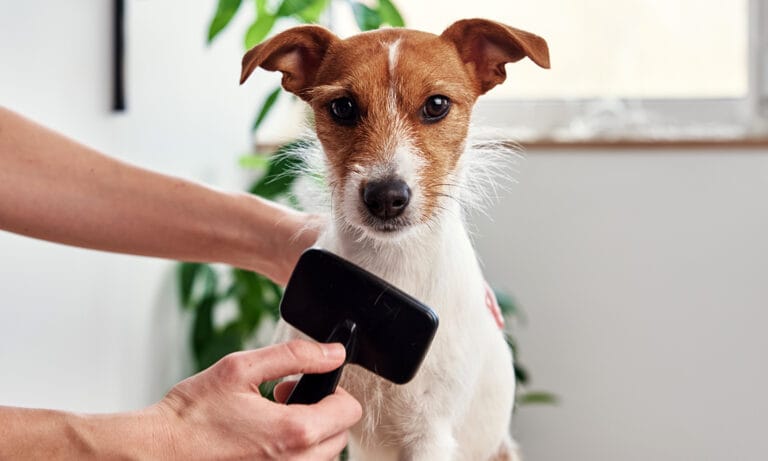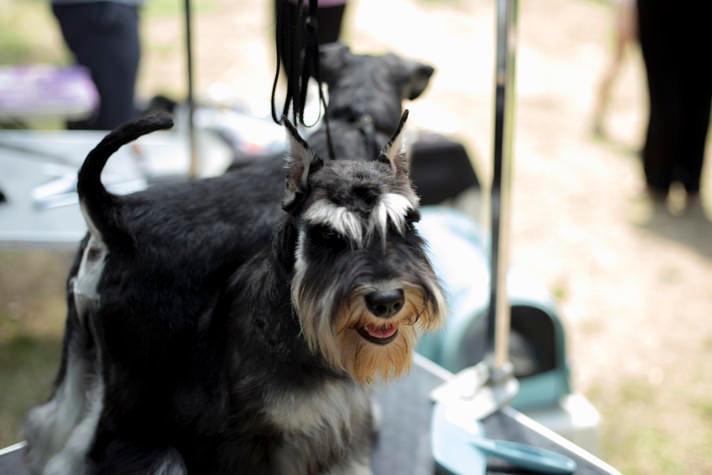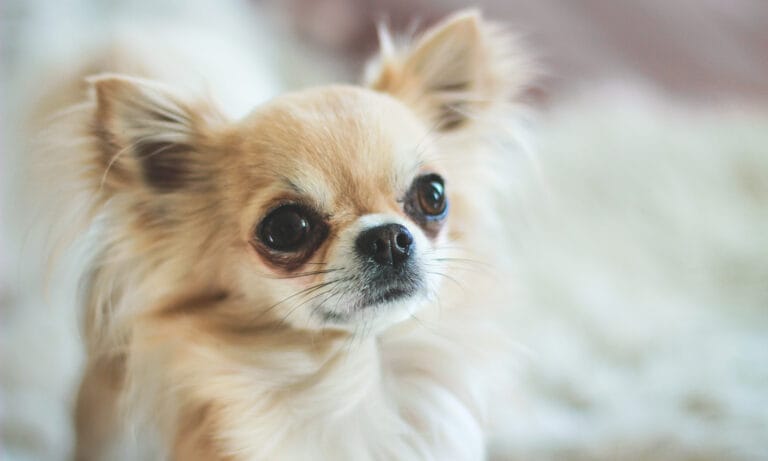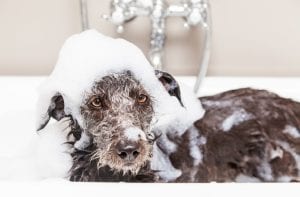Knowing how to bathe a dog is crucial for all dog parents—yes, even if you usually take your pup to the groomer. After all, you never know when your dog will roll in something funky after-hours, or when unforeseen circumstances might close your favorite grooming salon for a while.
No matter their size, breed or the length of their hair, all dogs need the occasional bath to keep them happy and healthy. The good news? Bath time doesn’t have to be stressful—in fact, it can even be fun.
I was a professional dog groomer for 12 years, and I’m here to show you how to give a dog a bath step by step. I’ll also include tips for how to prepare, the supplies you’ll need, how often to bathe a dog, and how to keep your pup calm during the bath.
Preparing for Your Dog’s Bath
The key to bathing a dog is to be prepared. There’s nothing worse than having a wet dog chasing you through the house as you search for towels! Follow these steps before you get started to make sure you have everything you need.
Where to Bathe Your Dog
First things first: Where are you giving your dog a bath? Depending on your home and your dog’s size, you have a few options for where to wash them:
- The kitchen sink. This is an ideal place to bathe small dogs, because it puts them right at your level. Cover the drain if you have an garbage disposal.
- The bathtub or shower. Here’s an indoor option for washing large dogs. Beware: The drain can get clogged if your pup sheds a lot, so you may want to use a hair catcher or strainer.
- In the yard. If you have space outdoors, you can wash your dog outside. Just be sure you have a way to secure them so they don’t run away before you’re done. Attaching their leash or grooming loop to a fence post, column, or a yard stake like the Frisco Easy Grip Spiral Stake should do the trick.
- Dog bathing stations. Some car washes and grooming salons have self-service dog bathing stations. They’ll include everything you need to wash and dry your dog–and you won’t have a mess to clean up afterward!
How to Keep Your Pup Calm
The key is to go slow and offer plenty of treats during the process, with a big reward for when you’re done (like a bully stick). A lick mat, like Frisco's Silicone Treat Lick Mat, slathered in peanut butter, can be a great way to keep your pup focused on something other than the bathing process.
Keep in mind that your dog will pick up on your stress if you get frustrated. When you stay relaxed during bathtime, it helps your pup stay calm, too.
Supplies You’ll Need to Bathe Your Dog
Gather your supplies before you start. Here’s what you’ll need for dog bath time:
- Cotton balls
- Saline solution
- A pitcher or sprayer
- Dog shampoo
- Towels
- Dog conditioner (optional)
- Detangling spray (optional)
- Ear cleaner (optional)
- Dog toothbrush (optional)
- Dog toothpaste (optional)
- Nail clippers (optional)
- Dryer (optional)
- Plenty of treats
One last tip: Before you dunk your dog, read the instructions on your dog shampoo bottle. Some dog shampoos need to be diluted with water before use; otherwise, the formula is too intense for dogs’ sensitive skin. You’ll want to find this out before you have a wet dog on your hands!
How to Bathe a Dog: Step-by-Step Instructions
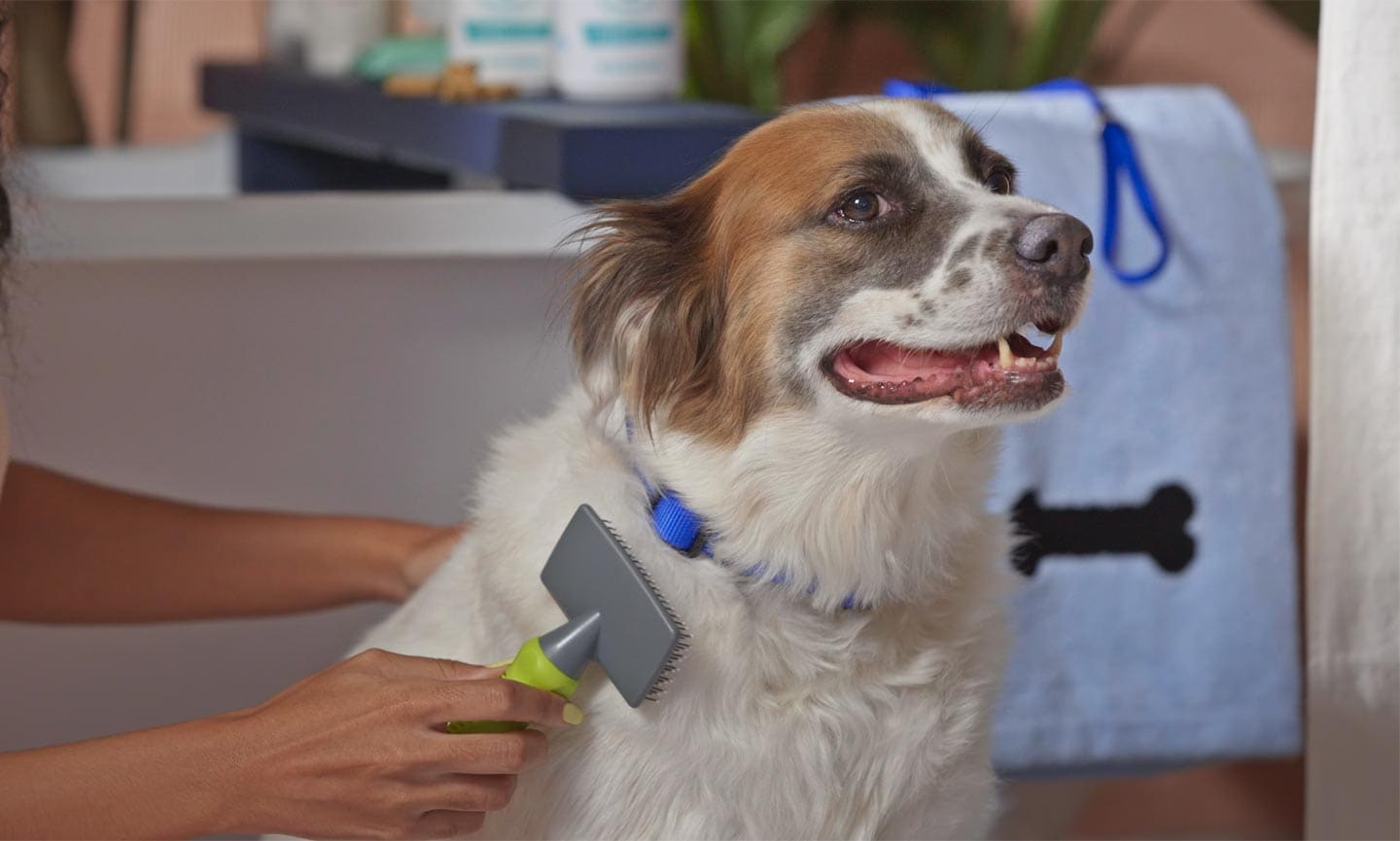
1 Brush Your Dog and Remove Mats
Water makes mats worse. If your dog has medium or long fur, brush them and remove mats and tangles before the bath.
Not sure what type of brush to use? Find the best brush for your dog's fur here.
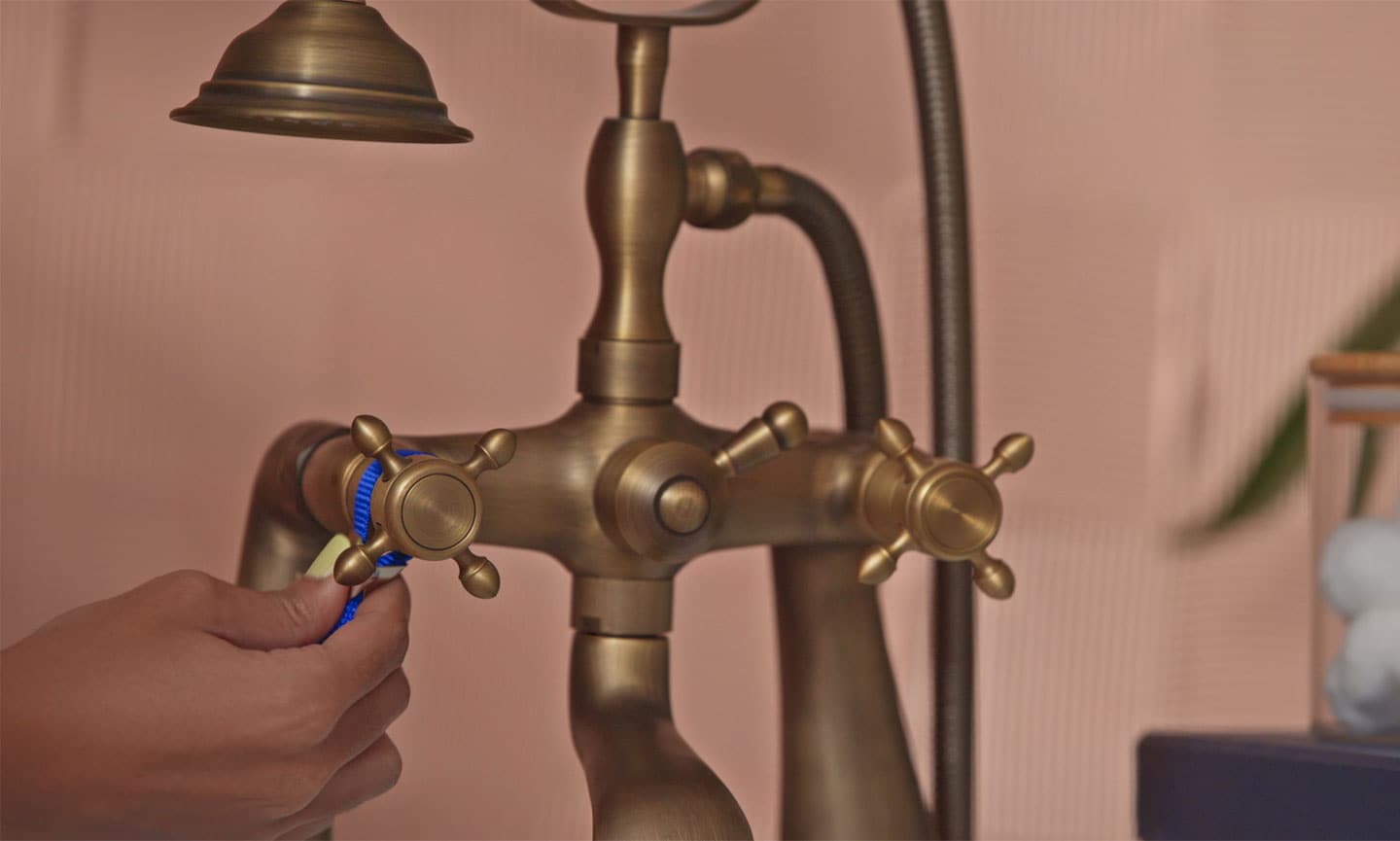
2 Secure Your Dog (Especially Outdoors)
Many dogs will try to run away rather than endure a bath. I recommend using a grooming loop to attach your dog to something secure, like a tie-out stake or the faucet.
If your dog's teeth need brushing, now's a good time to do that. Brushing your dog’s teeth is a critical part of keeping them healthy, but it can be messy. Doing it now means that any messes you make will be cleaned up in the bathing process—win-win! Follow this guide to brushing your dog's teeth.

3 Put Cotton in Your Dog’s Ears
Did you know one of the top causes of dog ear infections is moisture trapped in the ear canal? It’s one reason dogs with floppy ears tend to get more ear infections than those with perky ears.
Putting cotton balls in your pup’s ears before the bath helps keep them dry. Usually, a whole cotton ball fits well in larger dogs’ ears, and half a cotton ball is good for smaller dogs.

4 Wet Your Dog
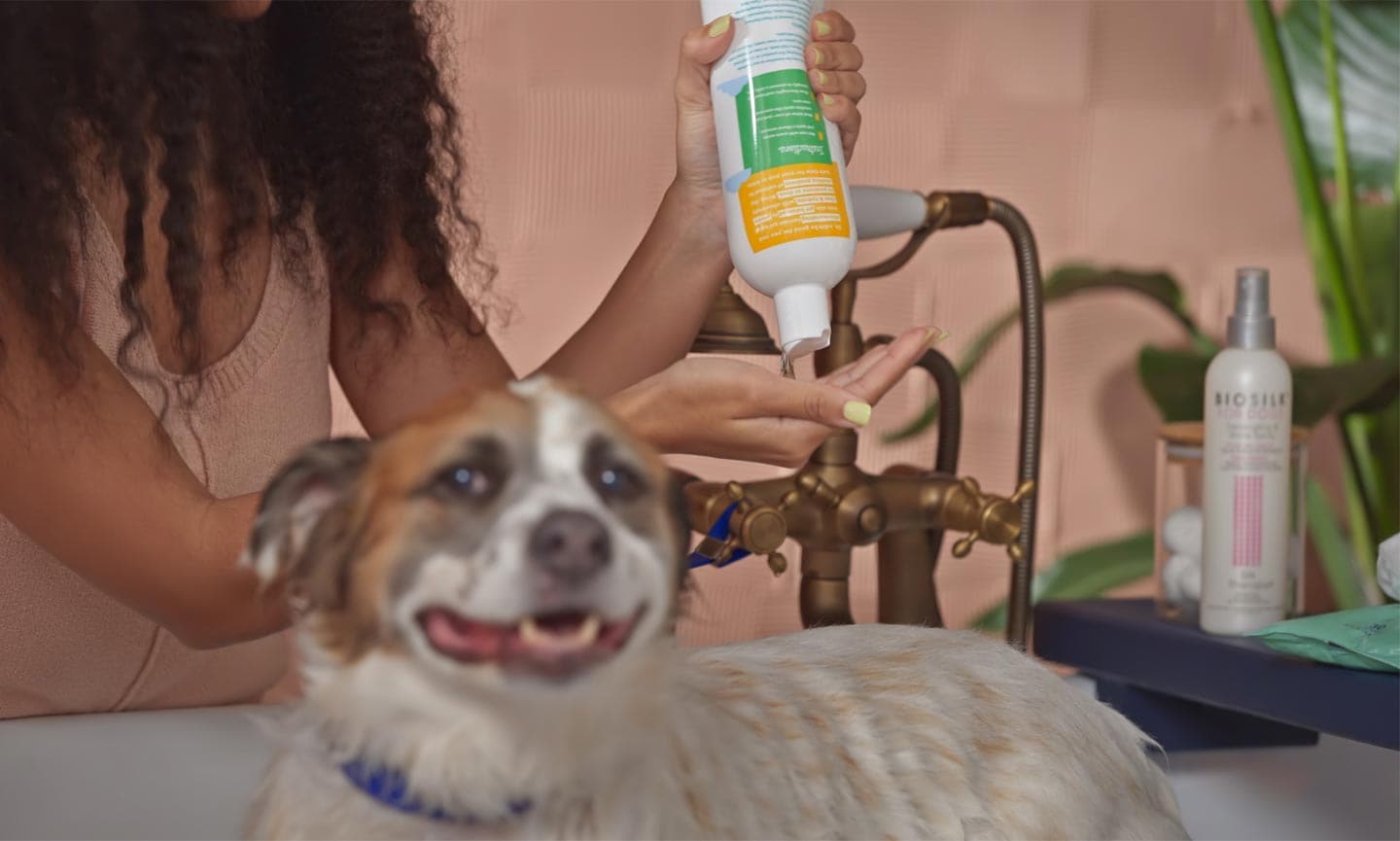
5 Apply Dog Shampoo and Lather
Remember: Before you lather up, check the instructions on your shampoo bottle to make sure your dog shampoo doesn’t need to be diluted first.
Begin lathering your dog at the tail area, working up to the back of their ears. Pay extra attention to the dirtiest areas, like the feet and genitals.
Avoid getting shampoo on your dog's face, because it can irritate their sensitive noses and eyes. For dogs with short hair, face wipes are the safest, easiest way to clean your pup’s muzzle. Being careful around your dog’s eyes, wipe their whole face.
If your pup’s face is especially dirty, you can use a face shampoo after you’ve washed their body. Even though these shampoos are formulated for use on your dog's face, you should still be careful to avoid your dog’s eyes and nose. I highly recommend TropiClean Spa Tear Stain Cleanser for Dogs. It’s powerful enough to break apart eye goop and beard junk while being gentle on their eyes.

6Rinse Well—Really, Really Well
After you’ve scrubbed every part of your dog, rinse them thoroughly, starting with their face (if you used face shampoo) and ending with their paws.
Think your dog is completely rinsed? Go ahead and rinse them some more. No, really. Dog fur is great at hiding pockets of soap, and if you don’t rinse it off now, it could cause skin problems ranging from flakiness to irritation to infections. Use your hands to feel around your whole dog to find soapy spots you can’t see, especially around the belly, under the armpits and genitals.
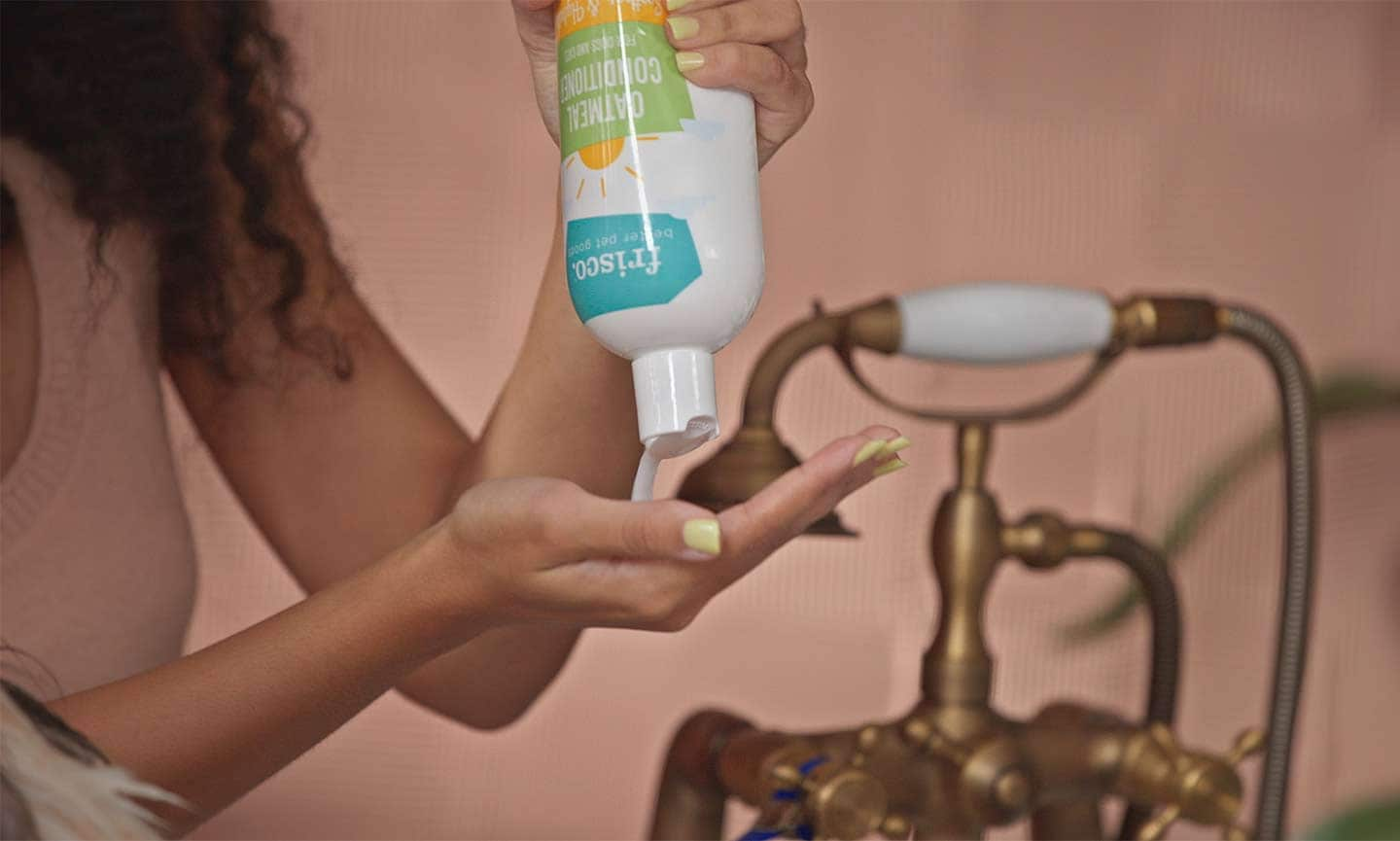
7Apply Conditioner (Optional) and Rinse Well
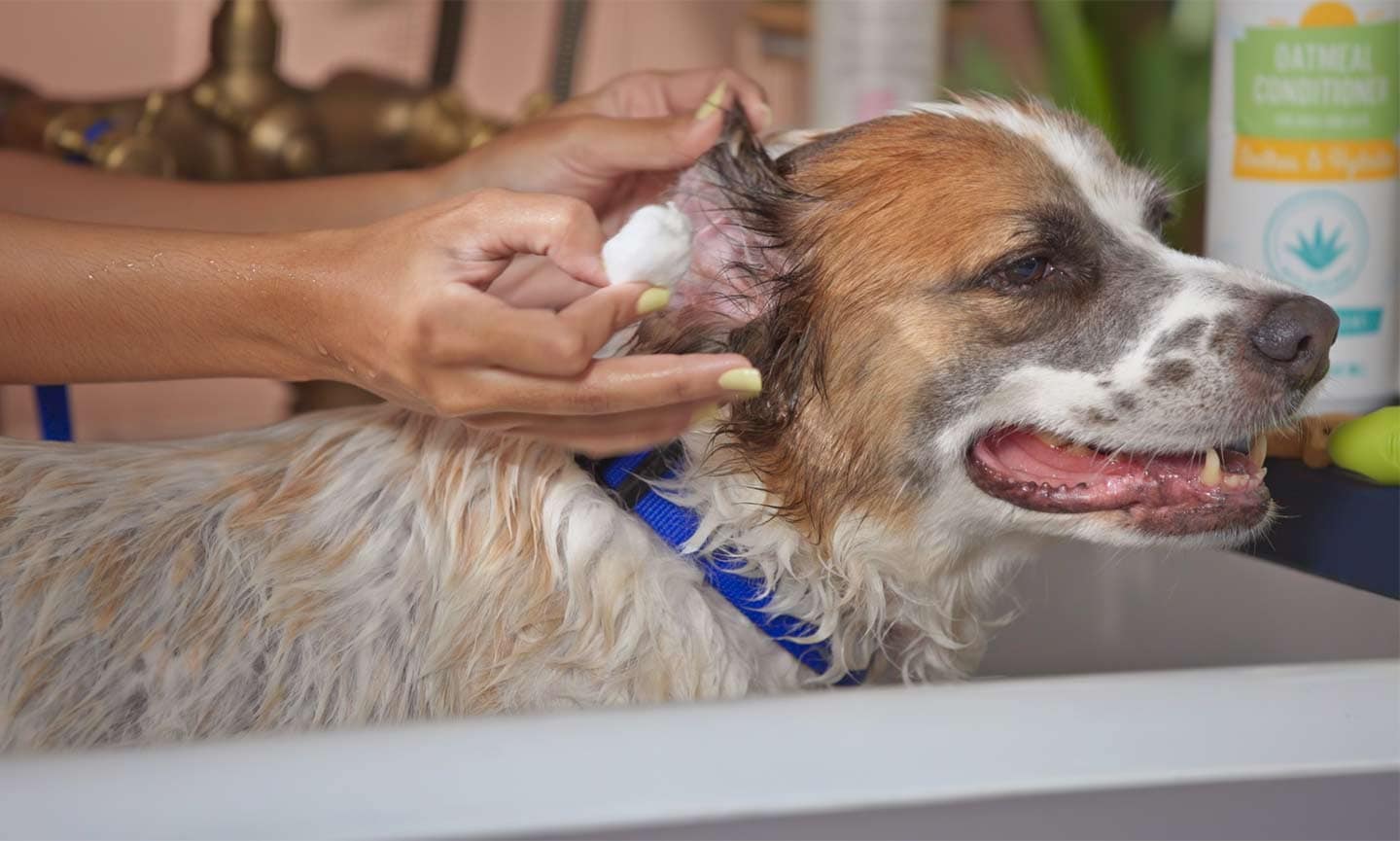
8Remove the Cotton Balls
If your dog hasn’t shaken them out yet, remove the cotton balls from your dog’s ears.
If your pup is due for an ear cleaning, now’s a good time to break out the dog ear cleaner. Ask your vet if you’re not sure whether to clean your dog’s ears—each dog is different, and what’s healthy for one could be detrimental to another.
Do you have a big dog with thick nails? They’re softer and easier to cut when wet, so after bathing and before drying (aka, right now) is a perfect time to cut them. Follow our step-by-step instructions for how to trim dog nails.
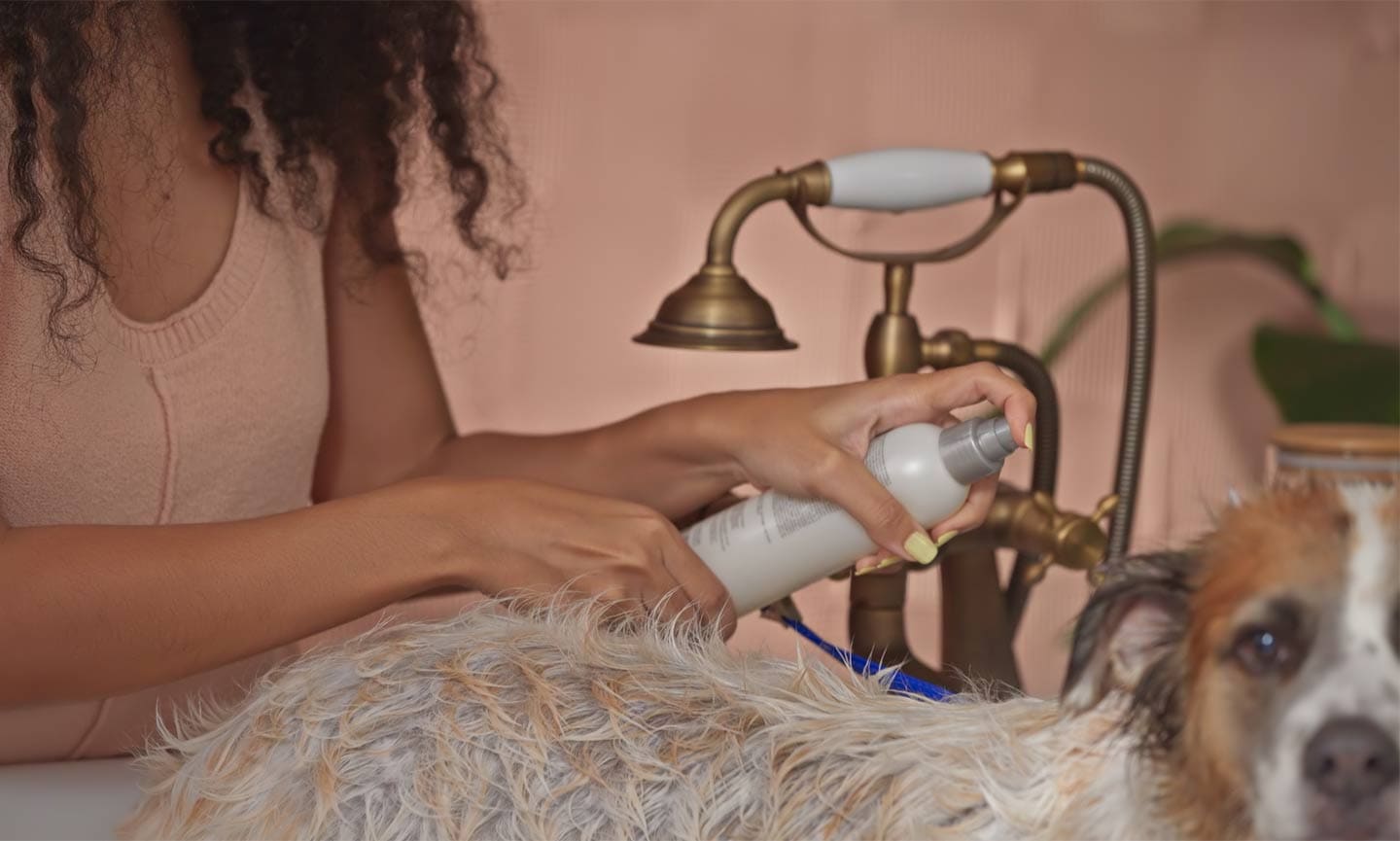
9Apply Detangling Spray (Optional)
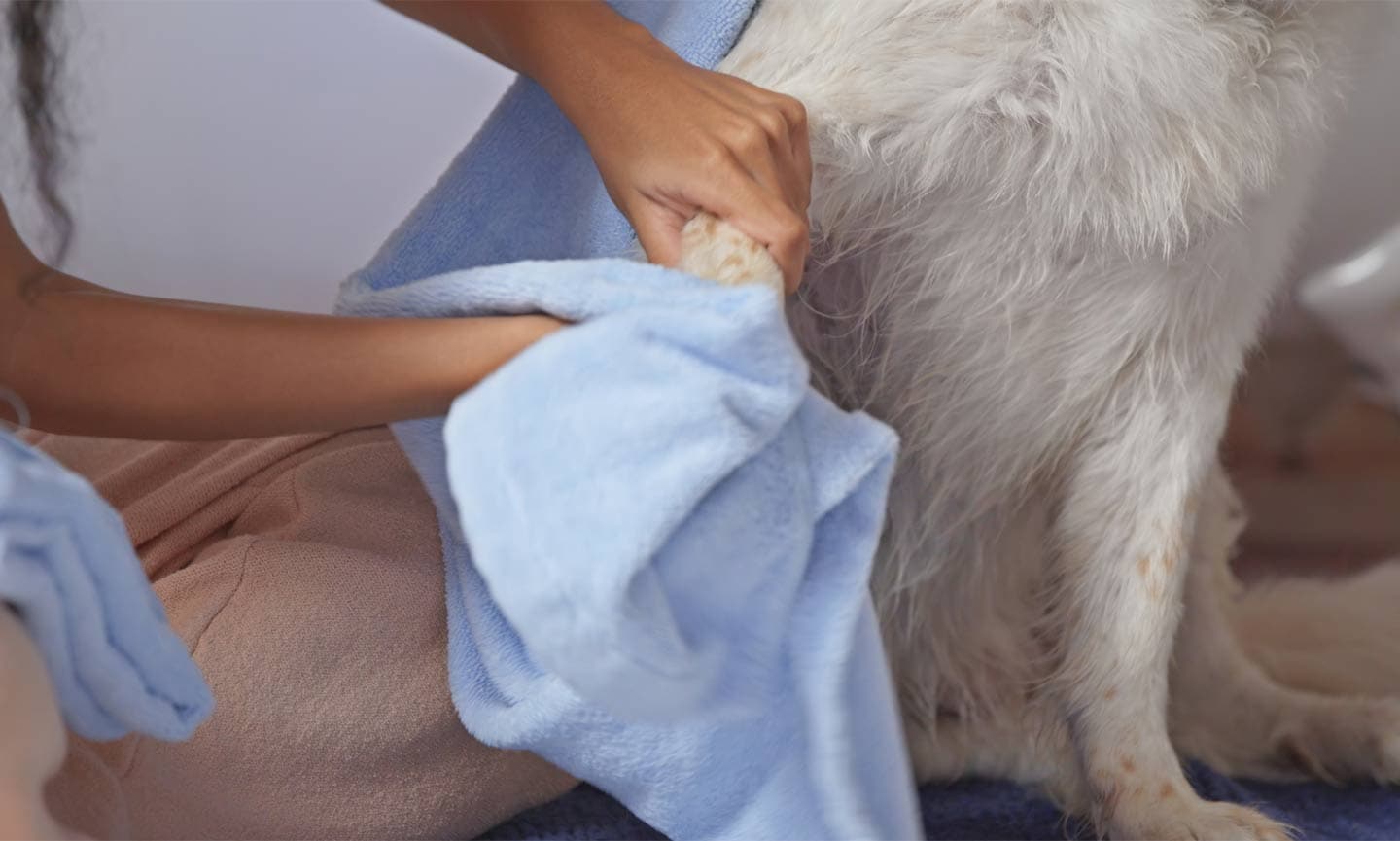
10Dry Your Dog
Start with a couple of thick towels to remove as much moisture as you can. If you use a hairdryer, use it on a cool setting to avoid overheating your pup.
For best results—especially for dogs who shed—use a velocity dryer like the Flying Pig Grooming High Velocity Dog & Cat Grooming Dryer. It blasts water and loose fur off your dog to get them dry and fluffy while reducing post-bath brushing time.
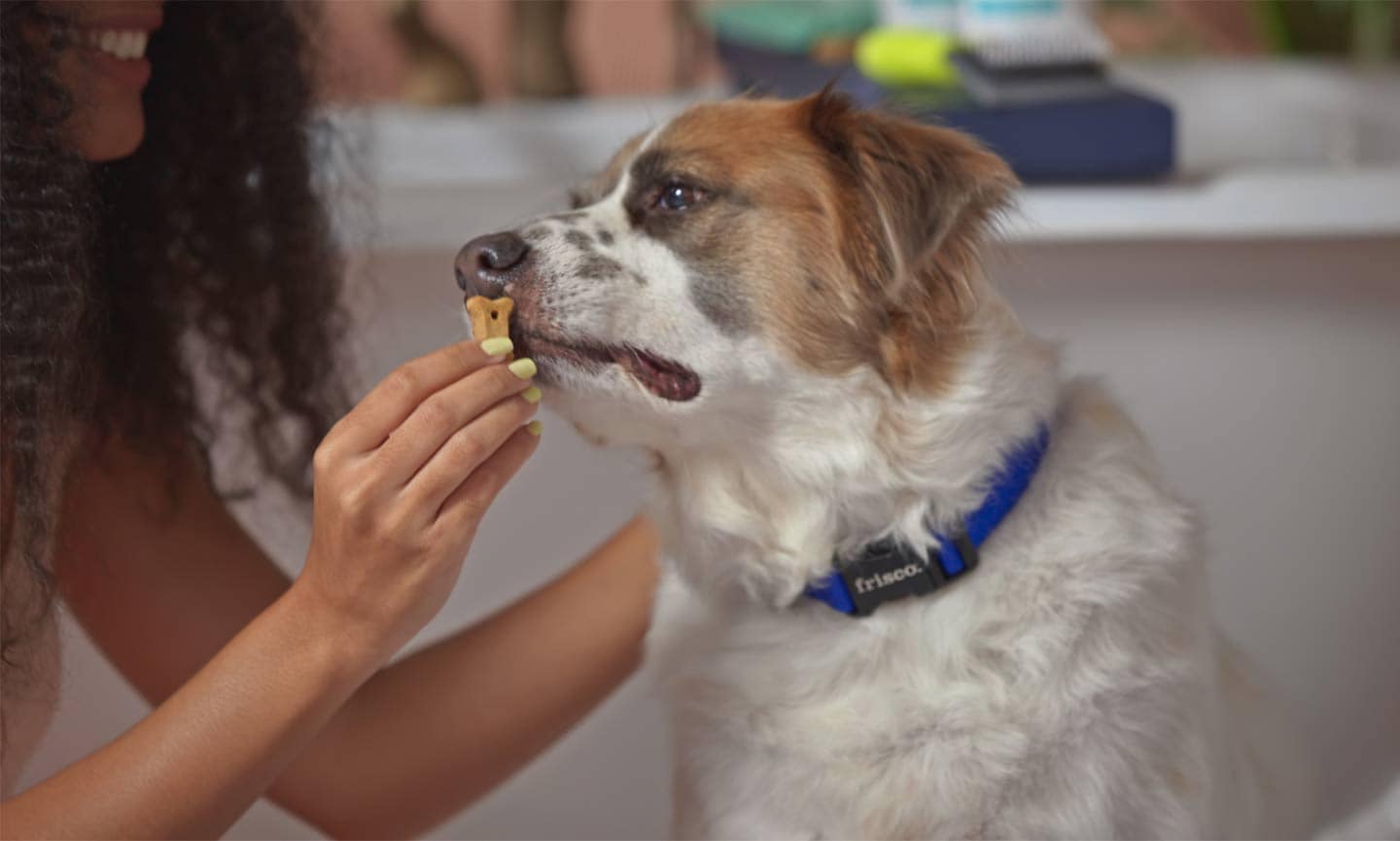
11Treat Your Pup
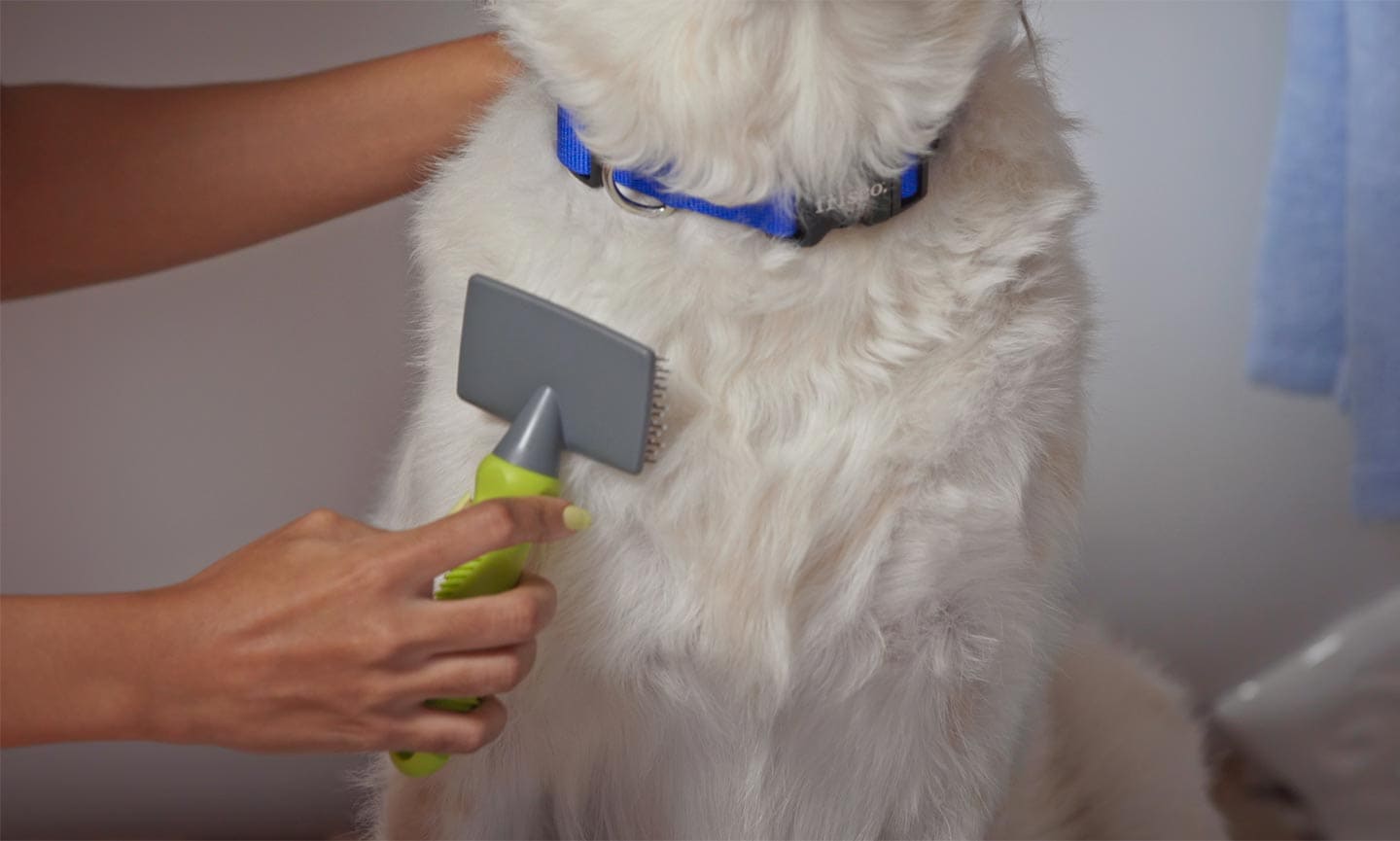
12Brush Your Dog Again
How Often Should I Bathe a Dog?
Most dogs need a bath every month or two. How often to bathe a dog depends on a few factors:
- If you have a short-haired dog who doesn’t get very dirty, a few baths a year may be enough.
- If your pup sheds a lot, you’ll want to wash them every month or two.
- For pups with medium to long fur, you should wash them every 4 to 6 weeks. Brush thoroughly and remove mats first.
Washing a dog more than once a month can dry out their skin, so if you like to bathe your pup more often, use an extra gentle shampoo and conditioner.
Why Is Bathing a Dog So Important?
Of course, it’s nice to keep your pup clean and smelling fresh—both for them and for you. However, bathing a dog is important for other reasons, too. It gives you the chance to see every inch of your dog’s skin and feel every part of their body. Along the way, you might spot:
- Parasites like fleas, lice, and ticks
- Skin irritation
- Lumps and bumps
Any of these should warrant a call to your vet to make sure your flea and tick meds are working their best, or to rule out any underlying health issues.
More on grooming your dog:
Share:
